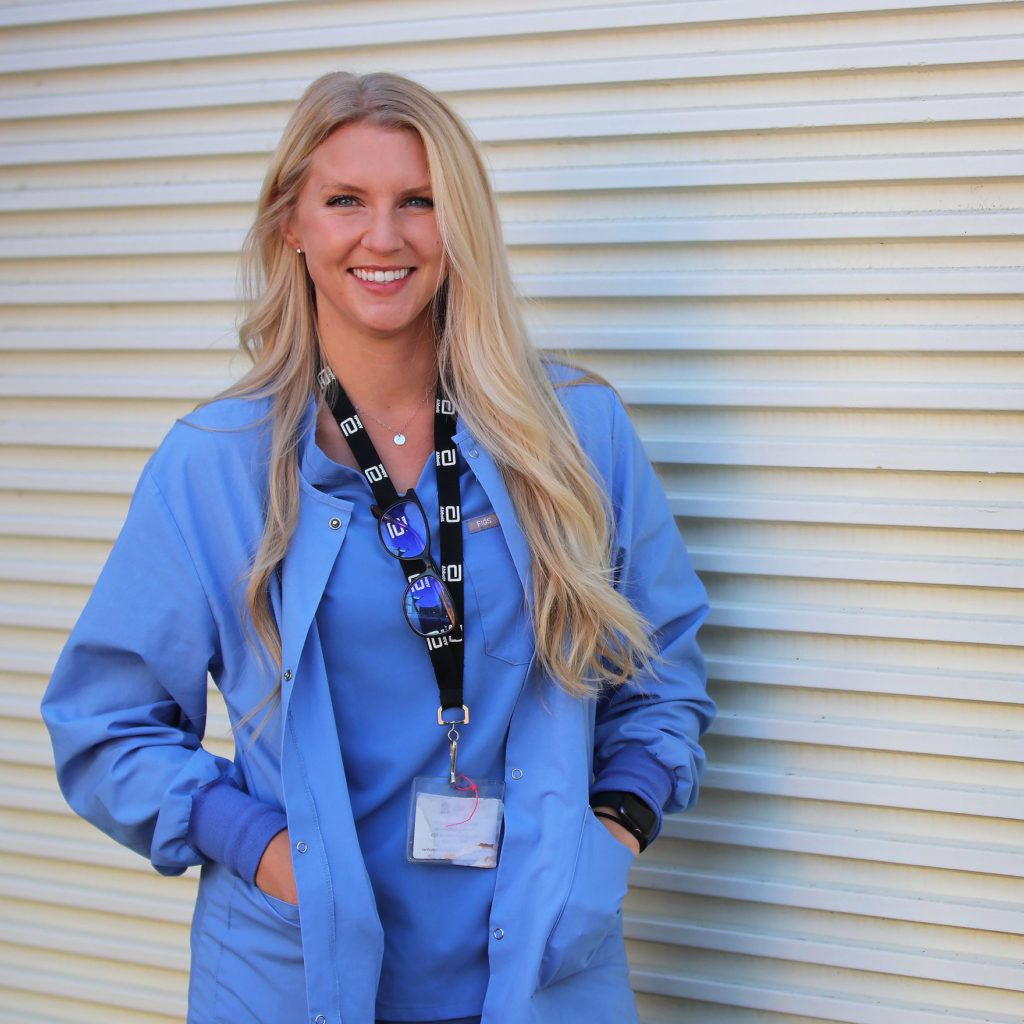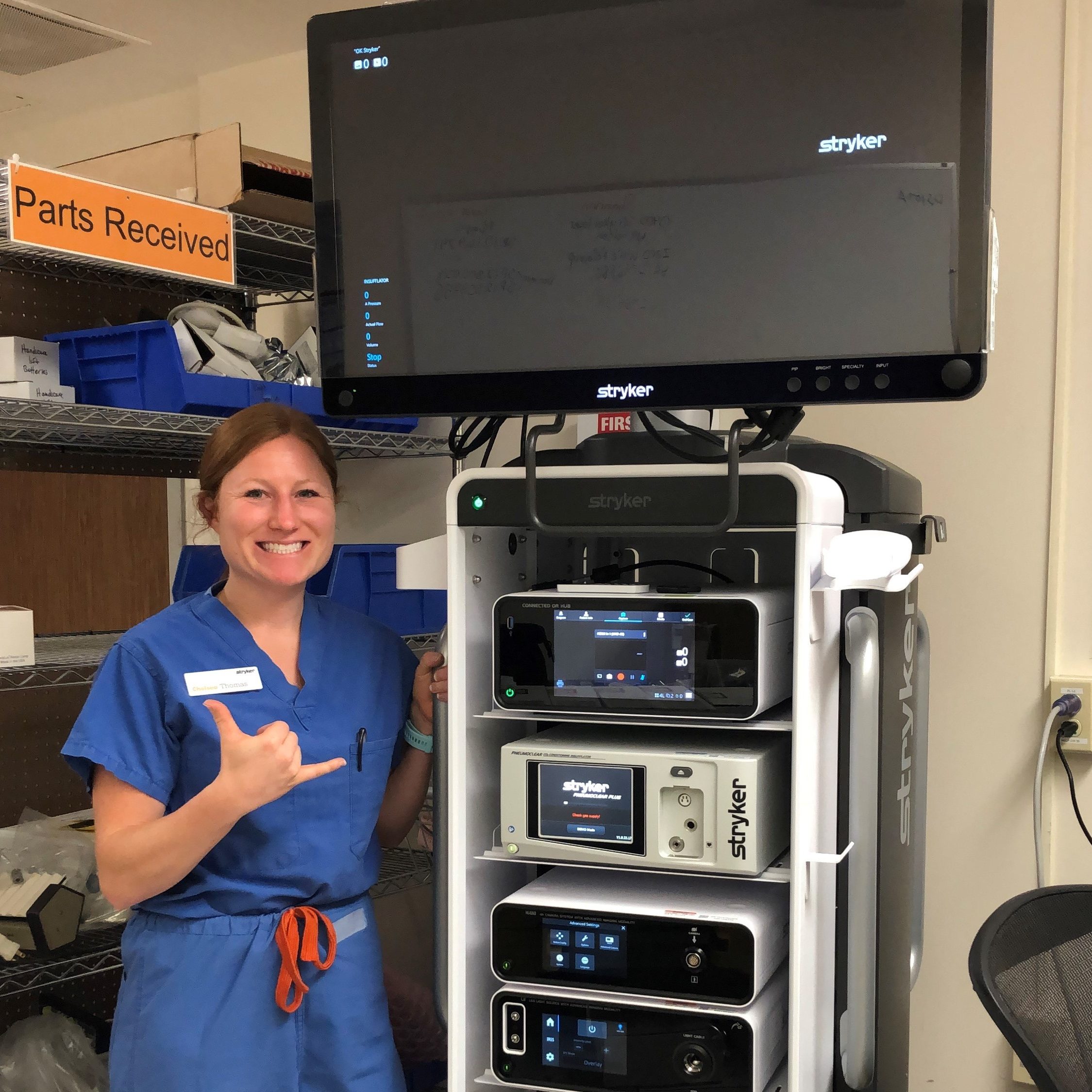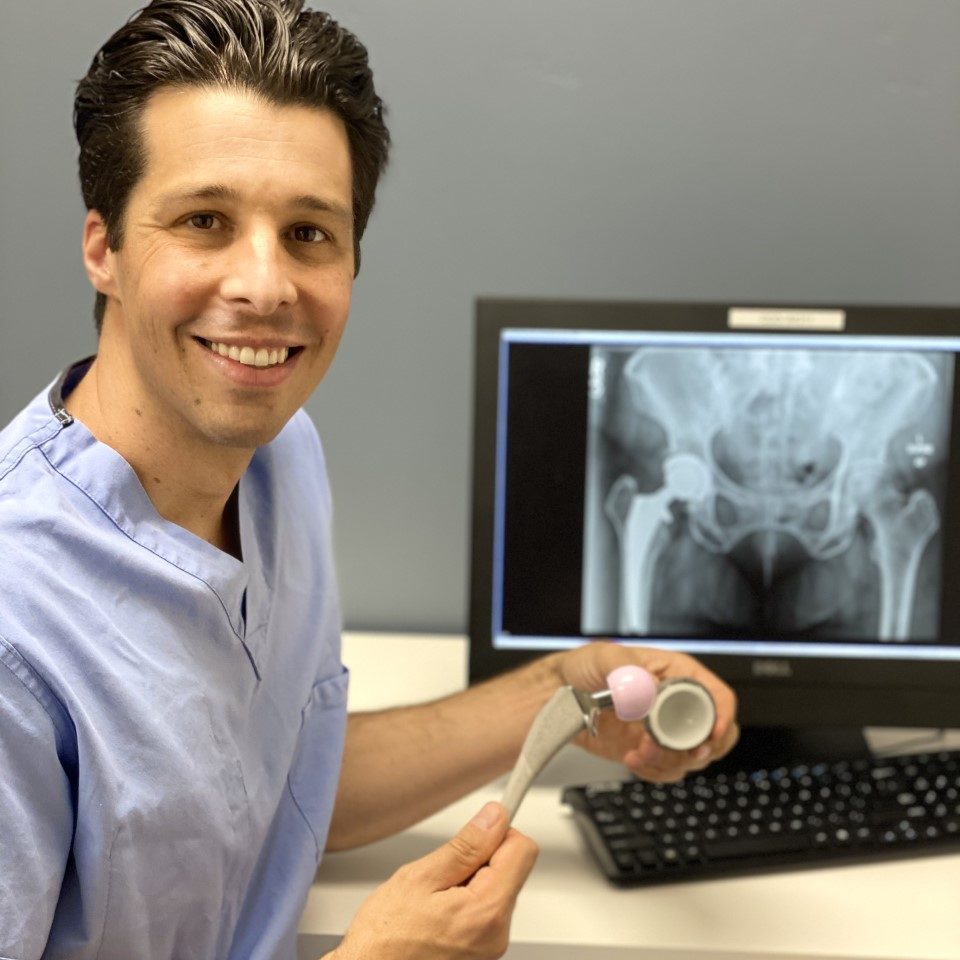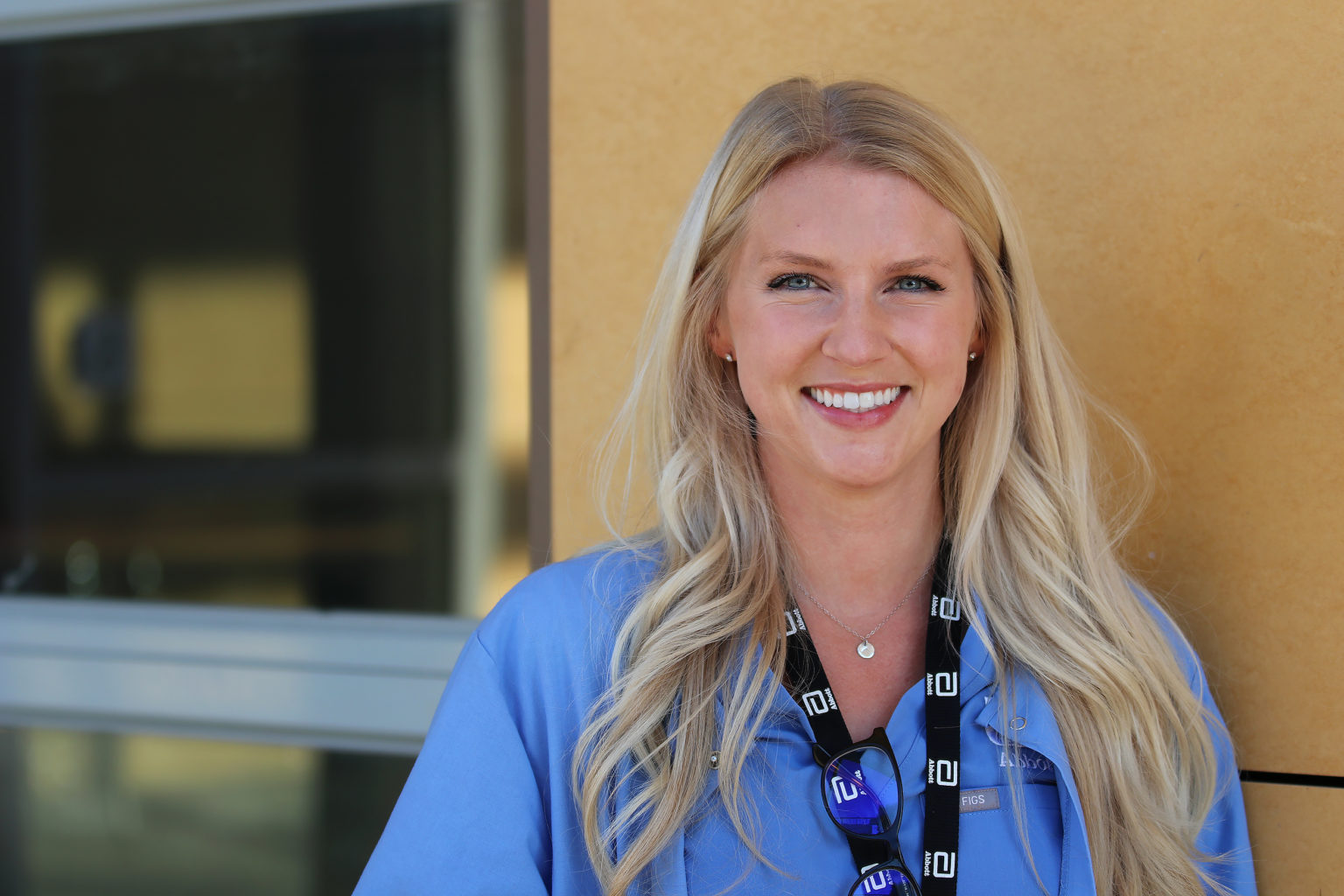
When Sarah Griess was a senior in high school, her grandfather’s heart began to race erratically, threatening to deprive the rest of his body from life-sustaining blood.
After he was rushed to the emergency room, medical staff quickly shocked his heart to restore its normal rhythm – saving his life – then implanted a defibrillator that would circumvent future heart failures.
“I remember visiting him in the hospital, and he handed me the pamphlet for the device and said, ‘Someday you’re gonna make these,’” Griess recalled.
His prophesy was almost right – today Griess programs defibrillators as a senior clinical specialist for Abbott Laboratories.
With the COVID-19 pandemic still altering our way of life, the health industry is on our minds more than ever. And many Cal Poly engineering graduates are currently working in the health industry – often alongside surgeons and nurses.
“A lot of people will see me in scrubs and think I’m a doctor or I’m a nurse,” said Chelsea Thomas, who works at Stryker Endoscopy, a medical device company in the Bay Area. “In my sales position at Stryker, I’ve witnessed hundreds of surgeries at this point, ensuring that surgeons understand how to use the medical device technology and making critical decisions for improved patient outcomes.”

Various engineering programs can prepare students for health-related careers. Cal Poly mechanical engineering graduates are currently working health-related jobs at places like Edwards Lifesciences, Oregon Health & Science University and Intermountain Healthcare.
A degree in materials engineering can prepare graduates for jobs developing and testing materials used in biomedical devices. And the general engineering program can allow students to design a college path that would suit their health-related interests, said Cal Poly Professor Dan Jansen, former director of the general engineering program.
But one program clearly stands out when it comes to health-related work.
“If a student entered Cal Poly and wanted to study engineering but also wanted to emphasize some area of the health industry, I would normally point them toward the biomedical engineering program,” Jansen said.
Many biomedical engineering graduates work with devices.
“When patients come in with their heart rates going too fast or too slow, we have different technologies to help solve that,” said Griess, who has a degree in biomedical engineering in 2013. “These technologies are so in-depth with many different algorithms. Therefore, Abbott wants their field clinical specialists to be present and involved when these devices are implanted, programmed and followed up. We want to achieve the best patient outcomes while providing the best service to our customers.”
Griess programs defibrillators and pacemakers to make sure they suit patient needs, and she is often in operating rooms, making sure devices are being implanted correctly.
“The best part of this job is not only am I working with the technology, but I get to see the end product, and I get to use the end product,” Griess said. “Therefore, I get to see how it changes people’s lives directly every day.”
When Thomas first entered school, she figured she would one day design shoes for Nike – which would have the added benefit of free footwear. But she soon realized she wanted to help others.
She began her career at Stryker as a quality engineer and now works in sales, two positions that have required she be in operating rooms. Stryker sells video systems to help medical staff see critical anatomy during minimally invasive surgeries.
During those procedures, doctors might ask Thomas what they are looking at and how to interpret.
“When I started at Cal Poly, I would have never thought that my engineering degree would have taken me into the operating room alongside surgeons and nurses, with a patient on the table,” said Thomas, who earned a
bachelor’s and master’s under the blended degree program in 2013.
Occasionally, engineering grads actually become the ones performing surgeries.

Dimitri Delagrammaticas, who also has Cal Poly degrees in biomedical engineering in 2009, began his career as an engineer for a medical device company. But he left that career to attend medical school.
“I especially yearned for and enjoyed the patient interaction, seeing firsthand, day to day, how the technology impacted patients’ lives,” he said.
After medical school at Georgetown and a residency at Northwestern, Delagrammaticas eventually wound up back in San Luis Obispo as an orthopedic surgeon with a unique perspective.
There’s no better pre-med training than engineering, he said, which helped him approach and solve problems while providing a unique framework to approach diagnosing and treating patients.
“From a practical sense, having an understanding on how medical devices are conceptualized, designed, manufactured and tested and an understanding how devices and products make it to market helps me engage industry and in research to find ways to improve the products and therapies we are able to offer our patients,” he said. “With the training in both engineering and medicine, I feel I am able to speak both the engineer’s as well as physician’s language and bridge the gap between and technical and clinical worlds.”

